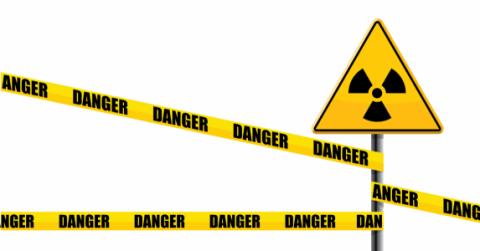
Don’t Ignore the Risk of Radon in Your Home
Radon is a radioactive gas that is colorless, odorless, and easily inhaled. It occurs naturally, as the byproduct from the decay of two of the planet’s most common radioactive elements: uranium and thorium.
Radon is present in nearly all soils. In many areas, it can become trapped in a home at high enough levels to impact air quality and pose a severe health risk.
Radon is a Class A carcinogen, known to cause cancer in humans. It’s the second leading cause of lung cancer in the United States (roughly 21,000 deaths each year) and the number one cause of lung cancer among non-smokers.
Are You In Danger?
Radon is not safe at any level. However, any reading over 4 picocuries per liter (pCi/L) poses a significant health risk.
It’s estimated that one out of every 15 U.S. homes has elevated radon levels. Your risk of radon poisoning may increase (or decrease) based on where you live. Some areas are more likely to have homes with higher levels of radon contamination than others.
The EPA’s radon map provides general guidelines of areas with radon issues. But don’t rely on the map! Wherever you live, it’s best to conduct a radon test and determine if your home has a problem.
U.S. EPA Radon Zones
Source: U.S. Environmental Protection Agency
If your water comes from a private well or other ground sources, you may also want to perform a radon water test. The EPA’s Safe Drinking Water Hotline (800-426-4791) can guide you to local laboratories that can test well water.
Radon Tests for Indoor Air Quality
Since you can’t see, taste, or smell radon, special test kits are needed to spot problems. Be sure to select a test kit that is approved by the EPA. There are several different types:
Short-Term Tests
Short-term test kits use charcoal for a passive reading of air quality over a relatively short time range—from two to 90 days. Since radon levels fluctuate, the EPA recommends following up with a second short-term test.
In some states, health departments offer free test kits. If you’re purchasing your own, plan to spend $10 to $30, depending on the type selected.
Long-Term Tests
Since radon comes from the ground, level of gas emissions will vary with weather and by season. Radon levels also change depending on a home’s ventilation and air circulation.
Long-term testing provides a more comprehensive picture of how radon ebbs and flows in your home. Options include passive test kits (90 days to a year) and active or continuous monitors.
Ongoing or Continuous Tests
Consumers can purchase active, continuous radon monitoring devices for roughly $200. Professional-grade monitors, which must be periodically re-calibrated cost several thousand dollars.
Continuous radon monitors also measure and record other air quality data such as barometric pressure, air temperature, and humidity. Professional models need to be read by a trained technician.
Renovating and Radon
If you’re remodeling areas of your home that sit at ground level or below the surface (like a basement renovation), test for radon before starting your project and consider incorporating radon-resistant features.
Some newer building methods help reduce radon collection in a home. It can cost less to incorporate these techniques into your project than to pay for radon mitigation after construction is complete.
Buying and Radon
Increasingly, prospective homebuyers include a radon inspection as a contingency clause in their purchase contract, which provides a current short-term snapshot of the presence of radon in a home.
If you are shopping for a newly-constructed home, ask whether the builder used radon-resistant construction techniques. Since 1990, over 1.5 million new homes have been built using these methods.
Even if your home was tested for radon before you bought it, recheck it regularly or invest in a continuous test device. Radon doesn’t announce its presence. Without monitoring, your first indication of a problem may be a deadly one.
Get More Information
The EPA provides extensive information on radon, including a guide for home buyers and sellers.
Additionally, the Centers for Disease Control and Prevention offers a state-by-state list of programs dealing with indoor air-related health inquiries.

